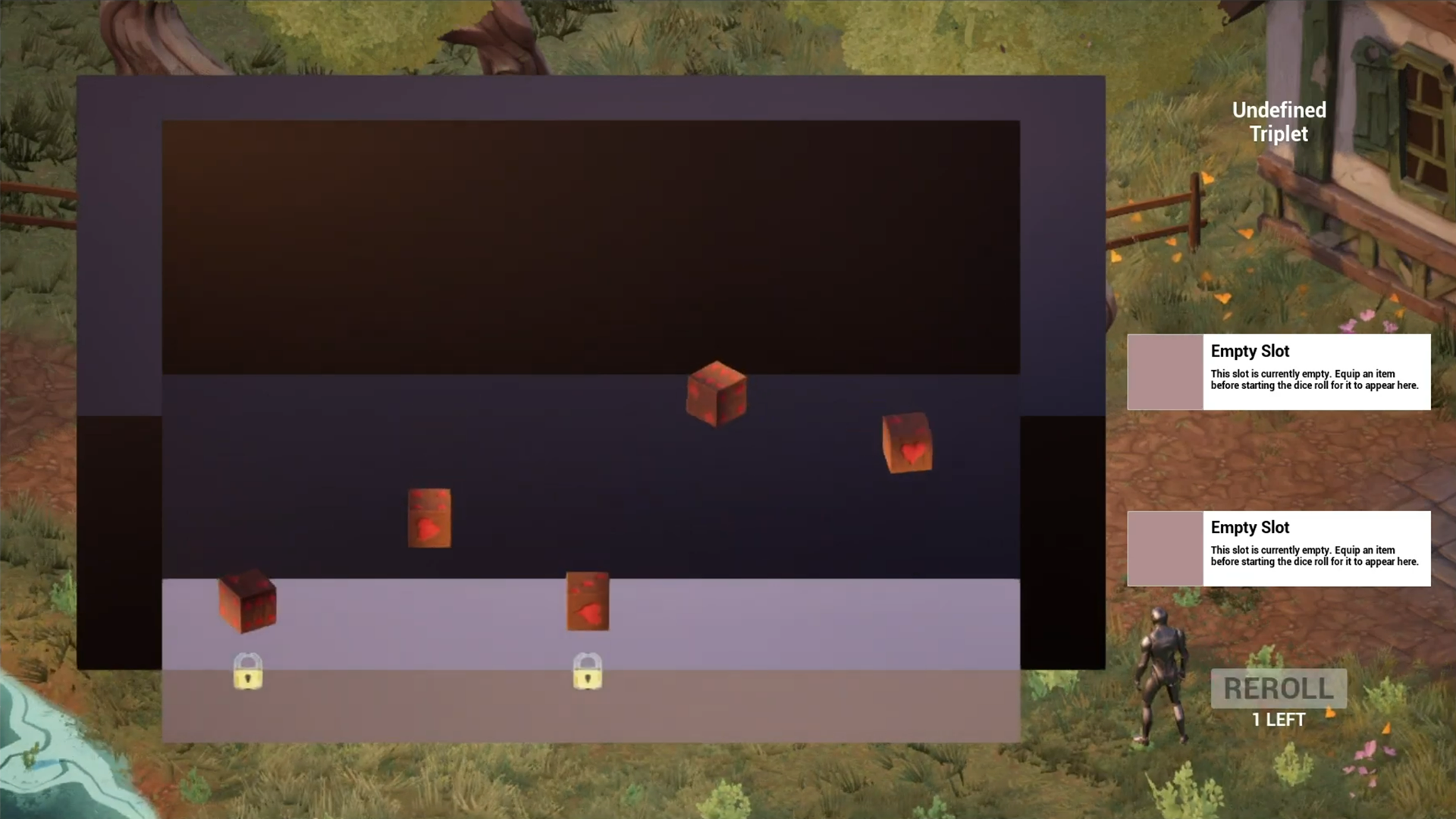
Alice Through the Fey Realm
Isometric Narrative Adventure
Alice Through the Fey Realm is an enchanting isometric narrative
adventure that thrusts you into the shoes of Alice. A compelling
adventure unfolds as you awaken in the mysterious Fey Realm and
embark on a quest to discover the key to your journey home.
 8 Months
8 Months
 7 Weeks
7 Weeks
 Technical Game Designer
Technical Game Designer
 Unreal Engine
Steam
Unreal Engine
Steam
PROJECT OVERVIEW
Our main reference game is Disco Elysium, where the players have no control over dice rolls. Alongside the system design team, I decided to prototype a physical dice rolling system with Yahtzee influences that would allow players to have more control over their dice rolls. Through playtesting, we validated that players prefer this version over leaving it all up to chance.
Cutting The Skill System & Adding Equipment Effects
At first, we had a skill system planned, which had to be cut due to scope. The equipment was supposed to give the player a boost for particular skills, like in Disco Elysium. However, after scrapping the skill system, we decided to repurpose the equipment to have an effect on dice rolling directly. I have now implemented 10 different equipment effects.
MY CONTRIBUTIONS

Dice Manager Event Graph
Equipment Example: Turn All Dice Into X
Dice Event Graph
Equipment slots dynamically display information from the player's inventory, showing the effect that is has once used. Win conditions are presented clearly, adapting to the specific parameters set by the mission design team. For instance, if the condition is a full house with two 5s and three 6s, the text reflects this precisely.
As a next step, we are working on the introduction to this system for new players, focusing on UX.

Evolution of Dice Roll UI Layout
Dice UI (Widget) Event Graph
I was able to learn how the production of a game goes from start to end, going through all the processes and ending with a Steam release for the first time.